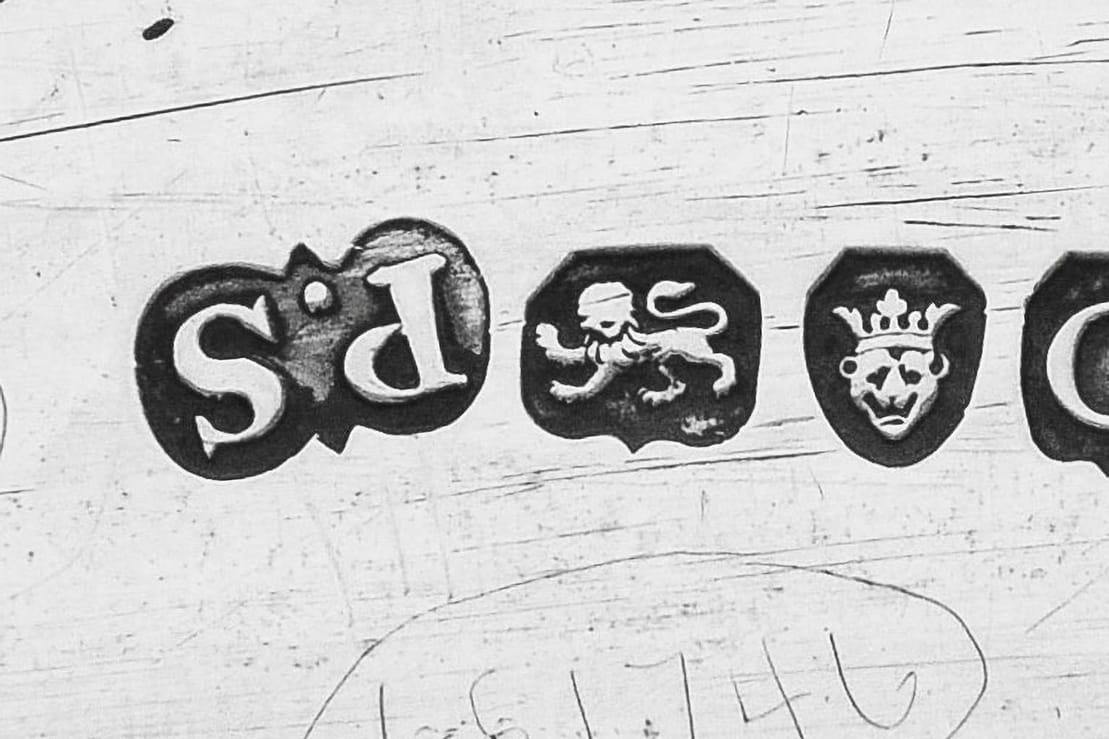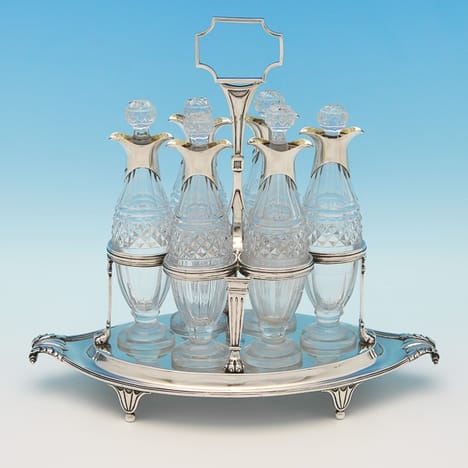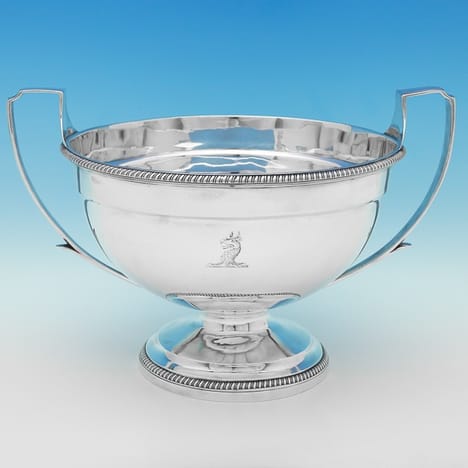
PAUL STORR
Paul Storr is considered the finest silversmith working in England during the Regency period. His large scale pieces, manufactured to the highest standards, made his name and skill famous. His work can be seen in museums across the world, and most notably in the Royal collection of Her Majesty the Queen.
Born in 1771, Storr was the son of a silver chaser who became an innkeeper in Westminster in 1788. At 14 years old Storr was apprenticed to Andrew Fogelberg, obtaining his freedom in 1792 and registering his first mark at the Church Street address he had completed his apprenticeship in. The same year he went into partnership with William Frisbee, with whom he stayed working with for only four years, dissolving the partnership in 1796. At this time Storr entered his second mark alone, and was recorded at working from 20 Air Street in Soho.From the Air Street studio, in 1797, Storr produced his first important piece. An impressive, 245 troy ounce, solid gold Christening font, commissioned by the Duke of Portland for his son, and adorned with figures of Faith, Hope and Charity. Two years later he was commissioned by the Governors and Company of the Merchants of England Trading into the Levant Seas, to manufacture a presentation piece, named the ‘Battle of the Nile Cup’ for Lord Nelson. This began a great age, and desire, for monumental presentation pieces of silverware, and Storr was considered the best in England at manufacturing these.In 1801 he married Elizabeth Beyer, a childhood friend and sweetheart of German descent, with whom he fathered 10 children, who in turn produced a staggering 54 grandchildren. It was at this time that Storr appears to have begun working almost exclusively for Rundell Bridge and Rundell, jewellers and goldsmiths to the Crown.In 1808 Storr moved his workshop from Air Street to 53 Dean Street in Soho, and 3 years later the partnership between Storr and Rundell was made formal. Storr was to be the workshop manager at this impressive firm until 1819, producing during this period some of the most wonderful pieces of silverware manufactured in England. Commissions for presentation and ceremonial pieces were given by the highest members of society, warrants were given by the Prince of Wales, the Duke of York and other members of the Royal family, and Storr’s fame and reputation helped Rundell Bridge and Rundell become one of the most important businesses in Victorian England.Having left Rundell’s in 1819, Storr set up his own premises in Harrison Street near Kings Cross. In 1822 he went into partnership with John Mortimer, a salesman who had previously worked at a goldsmiths shop in New Bond Street, which they soon acquired. The partnership appears to have been at times tumultuous, the company almost bankrupting itself, and it would have failed had a nephew of Elizabeth’s, John Hunt, not stepped in with financial backing. Hunt became a partner in the firm, which lasted until 1838, when a quarrel regarding the terms of the partnership seems to have been too much for Storr. The following year he retired and moved to Tooting, where he stayed until his death on 4th March 1844.
4 results
j7124 : Sterling Silver Cruet Set
Hallmarked In 1799
Hallmarked in London in 1799 by Paul Storr, this very handsome, George III, Antique Sterling Silver Cruet Set, comprises six bottles, all with silver mounts, and all fitted into a Neoclassical design frame which stands on four feet. The cruet set measures 9.25"(23.5cm) tall, by 10"(25.5cm) wide, by 4.75"(12cm) deep, and has a silver weight of 16.1 troy ounces.
£5,675
j5499 : Sterling Silver Bowl
Hallmarked In 1803
Hallmarked in London in 1803 by Paul Storr, this wonderful, George III, Antique Sterling Silver Bowl, stands on a pedestal foot, and features gadroon borders, reed bordered handles, and an engraved crest of a griffins head. The bowl measures 9"(23cm) tall, by 14"(36cm) from handle to handle and weighs 72.2 troy ounces.
£9,775
b0246 : Sterling Silver Meat Dish Cover
Hallmarked In 1807
Hallmarked in London in 1807 by Paul Storr, this handsome, George III, Antique Sterling Silver Meat dish cover, features a shaped gadroon border and removable gadroon detailed handle and is engraved with the coat of arms of Weetman Dickinson Pearson, 1st Viscount Cowdray. The meat dish cover measures 10"(25.5cm) tall, by 19.25"(49cm) wide, by 12.25"(31cm) deep and weighs 95 troy ounces (2.96kg).
£12,275
b9622 : Sterling Silver 4 Piece Tea Set
Hallmarked In 1813
Hallmarked in London in 1813 and 1814 by Paul Storr, this exceptional, Regency Period, Antique Sterling Silver Tea set, is typical of his design, with the coffee pot presented on a warming stand, and featuring shell and gadroon borders, gilt interiors to the sugar and cream, and engraved crests to each piece. The coffee pot on its stand measures 11.75"(30cm) tall, by 6.5"(16.5cm) from handle to side, the teapot measures 5.5"(14cm) tall, by 10.5"(27cm) from handle to spout, and the sugar and cream are in proportion. The tea set together weighs a substantial 102.8 troy ounces.
£18,975



